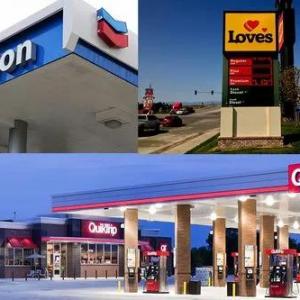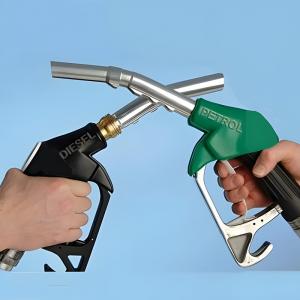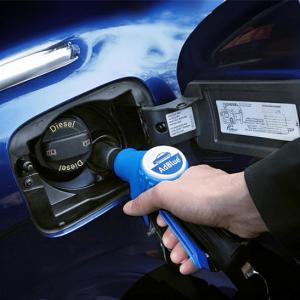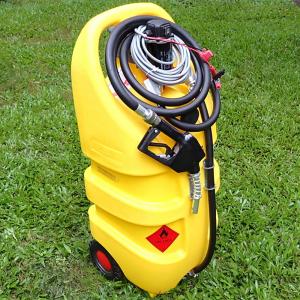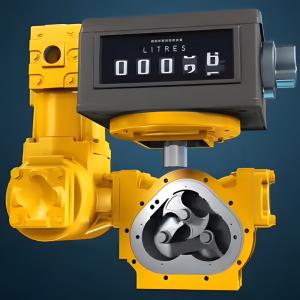How Much DEF Does a Truck Use?
Understanding Consumption, Costs, and Crucial Components for Your Business
In the world of modern diesel trucks and equipment, Diesel Exhaust Fluid (DEF) isn't just an additive; it's a fundamental part of emissions compliance and operational efficiency. If you're in the business of selling truck parts, DEF liquid, fluid transfer equipment, or agriculture machinery, understanding DEF consumption is key to serving your customers effectively. This article dives deep into how much DEF a truck typically uses, the factors influencing consumption, and the critical role of the entire DEF system – from the DEF nozzle to the transfer pump – in keeping those wheels turning and engines running cleanly.
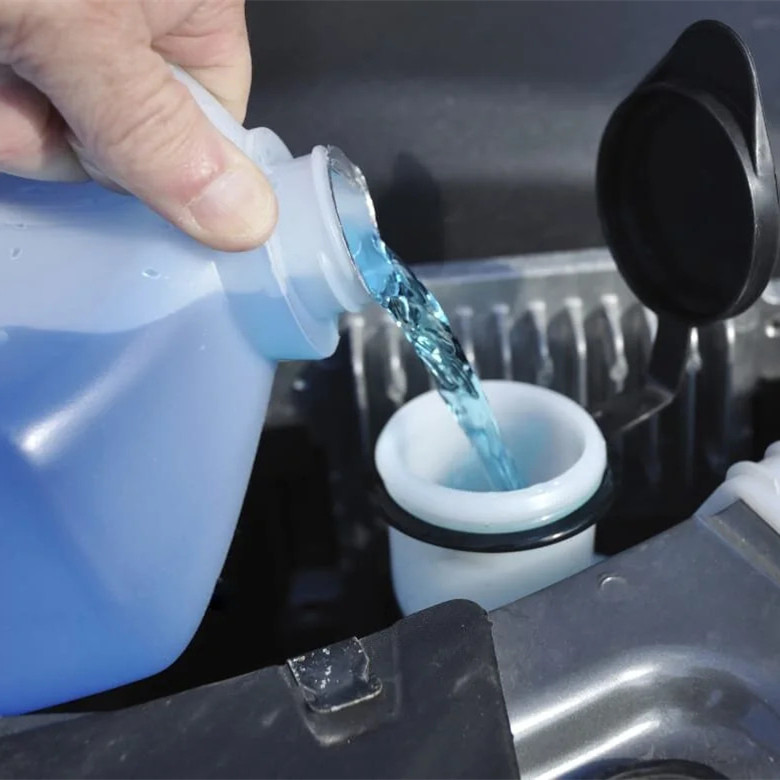
The DEF Equation: What is Diesel Exhaust Fluid and Why is it Essential?
Before we talk about consumption rates, let's briefly revisit what DEF is. DEF is a non-toxic solution of 32.5% high-purity urea and 67.5% deionized water. It's an integral part of Selective Catalytic Reduction (SCR) systems, a technology designed to reduce harmful nitrogen oxide (NOx) emissions from diesel engines, meeting strict environmental regulations like EPA 2010 in the US, Euro VI in Europe, and equivalent standards globally.
When DEF is injected into the exhaust stream, it converts NOx into harmless nitrogen gas and water vapor. This chemical reaction is vital for environmental compliance, but it also directly impacts a truck's running costs and operational needs.
Understanding DEF Consumption: The General Rule and Key Influencers
A common rule of thumb for DEF consumption is around 2-3% of fuel consumption. This means for every 100 gallons of diesel fuel burned, a truck will typically use 2 to 3 gallons of DEF. However, this is just an average, and actual usage can vary significantly based on several factors:
1. Engine Load and Duty Cycle
This is arguably the most significant factor.
-
Heavy Hauling/High Load: Trucks operating under heavy loads, pulling trailers, or driving up inclines will consume more DEF. The engine is working harder, producing more NOx, and thus requiring more DEF for neutralization.
-
Idling/Light Load: Conversely, trucks that spend a lot of time idling or operating under very light loads will use less DEF.
-
Stop-and-Go Driving: Urban delivery trucks with frequent stops and starts might see higher DEF consumption percentages relative to fuel, as the engine cycles through various load conditions.
2. Engine and Vehicle Make/Model
Different engine manufacturers and vehicle models have varying SCR system designs and calibration strategies, which can influence DEF consumption. Newer, more optimized engines might achieve better fuel efficiency with lower DEF consumption ratios.
3. Driving Style
Aggressive driving, rapid acceleration, and frequent hard braking can increase both fuel and DEF consumption. Smooth, consistent driving helps optimize both.
4. Ambient Temperature
While DEF systems are designed to operate in various temperatures (often with heated tanks and lines), extreme cold or heat can have minor effects on the system's efficiency, though these are typically negligible compared to load and duty cycle.
5. DEF Quality
Using low-quality or contaminated DEF can lead to higher consumption rates and, more critically, damage the SCR system. This is a vital point for those selling DEF liquid to emphasize to customers. High-purity, ISO 22241-compliant DEF is non-negotiable for system longevity.
Real-World Scenarios: Putting Consumption into Perspective
Let's look at some examples to illustrate typical DEF usage:
-
Long-Haul Truck (Heavy Load): A semi-truck averaging 6.5 miles per gallon (MPG) and traveling 100,000 miles per year would use approximately 15,385 gallons of diesel. At a 2.5% DEF consumption rate, this truck would consume around 385 gallons of DEF annually.
-
Local Delivery Truck (Mixed Driving): A delivery truck getting 8 MPG and traveling 50,000 miles per year uses 6,250 gallons of diesel. At a 3% DEF rate, it would use about 187.5 gallons of DEF per year.
-
Agriculture Machinery (High Load, Varied Hours): A large tractor operating 1,000 hours per year, consuming 10 gallons of diesel per hour, uses 10,000 gallons of diesel. At a 2.8% DEF rate, it would require around 280 gallons of DEF annually.
These figures highlight that while the percentage might seem small, the total volume of DEF consumed over a year, especially for large fleets or active agricultural operations, can be substantial, necessitating reliable fluid transfer equipment.
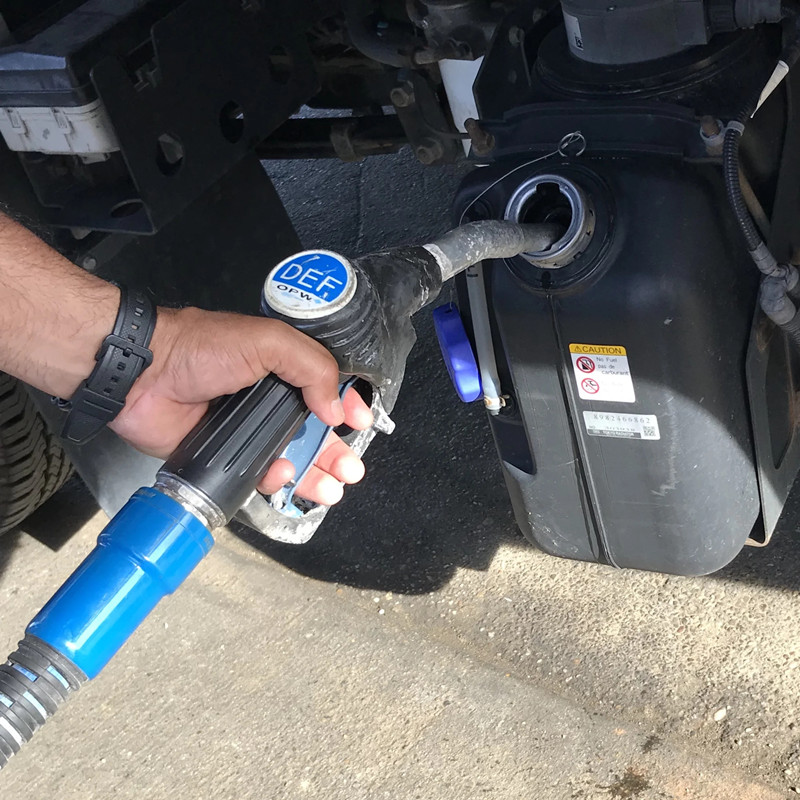
The Critical Role of DEF System Components: Beyond Just the Liquid
For businesses supplying the trucking and agriculture sectors, understanding DEF consumption is just one piece of the puzzle. The entire DEF delivery ecosystem is crucial for consistent performance and avoiding costly downtime. This includes:
1. DEF Nozzles: The Point of Contact
The DEF nozzle is the final point of delivery into the vehicle's DEF tank. Unlike a Fuel nozzle, a DEF nozzle is specifically designed to:
-
Prevent Contamination: Often featuring a magnetic or mechanical interlock that only allows it to fit into dedicated DEF tank openings, preventing accidental cross-contamination with fuel.
-
Ensure Purity: Made from DEF-compatible materials (e.g., stainless steel, specific plastics) to avoid corrosion and maintain fluid integrity.
-
Minimize Spills: Designed for clean, drip-free dispensing.
For businesses selling truck parts or fluid transfer equipment, offering high-quality, compliant DEF nozzles is essential. A faulty or incompatible nozzle can lead to spills, contamination, and frustrated customers.
2. DEF Transfer Pumps: Ensuring Purity and Efficiency
DEF transfer pumps are designed specifically for the unique characteristics of DEF. They are distinct from Fuel pumps due to DEF's corrosive nature to many common metals. Key features include:
-
Corrosion-Resistant Construction: Made from materials like polypropylene, stainless steel, and EPDM seals.
-
Closed-Loop Systems: Many feature closed-loop or dry-break systems to prevent external contaminants from entering the DEF during transfer.
-
Integrated Filtration: Some pumps include filters to catch any particulate matter, further safeguarding the DEF purity.
-
Accurate Metering: Often equipped with Flow meters for precise DEF filling, which is vital for large fleet management or bulk dispensing.
Whether for a small farm topping off a tractor from an IBC, or a large trucking depot managing a bulk DEF tank, reliable DEF transfer pumps are indispensable for efficient and contamination-free DEF filling.
3. Transfer Tanks with Pumps: Mobile Fluid Powerhouses
As discussed, the transfer tank with pump solution is a game-changer for on-site fluid management. For agriculture machinery and remote trucking operations, having a self-contained unit capable of moving fuel, DEF, or other fluids directly to the equipment saves significant time and effort. These systems feature:
-
Durable Tank Construction: Often made from high-density polyethylene for DEF, or robust steel/aluminum for fuel.
-
Integrated Pump and Hose Systems: Providing a ready-to-use solution for quick and efficient dispensing.
-
Mounting Options: Designed to be easily secured onto truck beds, trailers, or utility vehicles.
For suppliers of fluid transfer equipment, offering a range of these mobile solutions caters directly to the operational demands of your target customers, enhancing their productivity.
Google Hot Topics and User Needs: What Customers Are Searching For
Customers today are not just asking "how much DEF does a truck use?" Their queries extend to broader concerns reflecting cost, reliability, and ease of use. This is where your business can provide immense value:
-
"DEF consumption per mile/gallon": This indicates a desire for precise cost tracking and budgeting. Provide conversion charts or calculators.
-
"DEF cost savings tips": Customers want to know how to optimize usage, which ties back to driving habits, proper maintenance, and using quality DEF.
-
"Best DEF transfer pump for farm use": This shows a clear intent to purchase specific fluid transfer equipment for agriculture fluid dispensing. Highlight product features, durability, and compatibility.
-
"Problems with DEF system / DEF light on truck": These are pain points. Your knowledge about contamination, proper DEF filling practices, and the importance of certified DEF liquid can provide solutions.
-
"On-site DEF storage solutions": Businesses are looking for efficient ways to manage larger volumes of DEF, indicating a need for bulk tanks, heating solutions, and reliable DEF transfer pumps.
-
"DEF nozzle compatibility": Customers are trying to avoid costly mistakes. Provide clear guidance on universal vs. specific DEF nozzle types.
By addressing these common search queries, your content becomes highly relevant and helpful, positioning your business as a trusted resource.
The Core Value Proposition for Your Business
For truck parts suppliers, understanding DEF consumption allows you to offer not just replacement parts (like DEF nozzles or filters), but also preventative maintenance advice. For DEF liquid providers, it’s about emphasizing the long-term cost savings of high-purity, certified DEF and reliable fluid transfer equipment. For fluid transfer equipment companies, it's about showcasing how your transfer tanks with pumps and DEF transfer pumps are critical tools for operational efficiency and environmental compliance. And for agriculture machinery dealers, it's about integrating these fluid management solutions into a holistic farming strategy that keeps equipment running smoothly and sustainably.
In essence, efficient DEF management, from understanding consumption rates to deploying the right fluid transfer equipment and ensuring proper DEF filling practices with the correct DEF nozzle, is crucial for every diesel operation. By providing comprehensive information and reliable products, your business becomes an indispensable partner in navigating the complexities of modern diesel technology.
